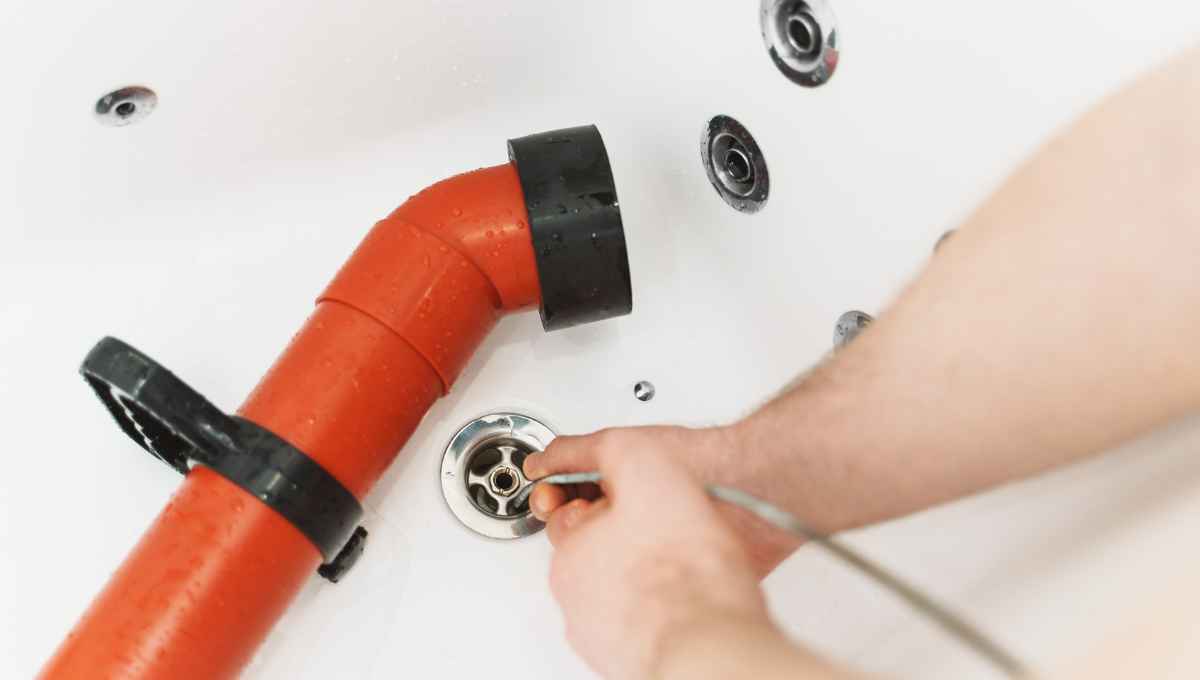Can a Bathtub Drain Be Moved? (We Cover This Step by Step)

We spend at least one hour of our day in the bathroom, so naturally, you would want to make the room as pleasing as possible. Sometimes this requires remodeling the whole bathroom, but what about the plumbing? Can a bathtub drain even be moved?
It is possible to move a bathtub drain, although it’s not a particularly easy, quick, or cheap project. You will probably need to remove the floor and lay a new plumbing line for your bathtub. We would recommend enlisting a professional plumber to oversee the project.
That being said, it’s not impossible to do this as a DIY project. In this article, we detail the steps that you should follow to move a bathtub drain. You should have a plumber’s phone number handy if you need any further assistance.
This post contains affiliate links. This means Household Blogger may earn a commission should you make a purchase using any of our links. Please refer to our full affiliate disclosure policy for full details.
Here’s a Quick Pro Tip!
If you do plan to complete this project on your own, there are some tools that will make the whole process a lot easier. We have compiled the essential tools that you’ll need on hand when you move your bathtub drain.
Tools you will need to move a bathtub drain
1. Hacksaw – Used to cut through pipes.
2. Power Drill– Used to make a new drain hole in the floor.
3. Pipe Glue – Used to attach pipes to couplings.
Bathroom Plumbing
Indoor plumbing is common practice within developed countries, and it’s definitely essential in any new house.
It’s hard to imagine that indoor plumbing was not available in half of the houses in the United States less than 100 years ago.
The plumbing system in our houses can be quite complicated; thus, professionals are trained to be plumbers. If you’re not trained or certified, it would be best to hand any remodeling projects over to a plumber.
You might also enjoy our post on Whether Baths Have Shut Off Valves
Moving a Bathtub Drain
It’s certainly possible to move a bathtub drain, although it probably won’t be easy or cheap. Depending on how far you want to move from the original drain, your bathroom might need a new plumbing system.
If you’re planning on moving the bathtub less than 3 feet from its current location, you could get away with connecting the new tub to the existing plumbing.
However, if you want to move the tub further than 3 feet, you’ll probably need to install new plumbing.
So when you’re remodeling, consider keeping the bath in the same spot or only moving it a small distance.
If you’re simply replacing your old tub with a new one in the same location, the drain has to be in the same spot (in front or in the middle of the bath). However, if you want your new tub in a different spot, the drain location does not matter.
You can expect to spend over $1000 to move your bathtub drain a few feet in any direction. The cost of the actual replacements is not too severe, but the labor needed will probably be extensive.
If you consider yourself a pro with DIY projects, have a look at these steps to move a bathtub drain.
Steps to Move a Bathtub Drain
Moving a bathtub or a shower drain basically means re-attaching the sewer pipe to the P-trap of the bathtub drain.
The P-trap is connected to the main sewer line with a coupling. When you’re planning on moving your tub, you’ll probably need to purchase a new P-trap and couplings.
Step 1 – Cut the Sewer Pipe
Find the sewer pipe going down from your bath drain and use a hacksaw to cut ½ inch above its connection to the P-trap. Now you can move the bathtub to its new position.
Step 2 – Create a New Drain Hole
After determining where your bath will be, get your power drill. Use a ½ inch wood bit to drill a new drain hole into your floor, where the bath will fit over.
This hole should be about ½ inch bigger than the pipe’s diameter.
Step 3 – Get The Pipe Couplings
Go back to the original drain pipe that you cut with the hacksaw and smear some pipe glue around the edge and the inside of the coupling.
Insert your new ½ inch pipe into the coupling and hold it for 30 seconds.
Continue this process until you have connected the new drain to the original pipes (don’t glue these together yet, you still need to install the P-trap).
Step 4 – Installing The P-trap
The P-trap should be completely vertical, with one end attached to the sewer line (where the original drain pipe was), while the other end of the P-trap is attached to the drain pipe that you just created.
Now you can open the water and test whether the drain pipe flows into your house’s plumbing system.
You might also enjoy our post on Whether a Shower Drain Needs a Trap
Plumbing Regulations
Across the US, plumbers adhere to building codes set out by the government. There are certain regulations that you should be aware of, especially if you plan on doing this project yourself.
Plumbing Building Codes
A drain should always be a minimum of 15 inches from the nearest wall or permanent fixture. This applies to bath, toilet, or shower drains in your bathroom.
A bathtub and a shower can share a drain pipe as long as the pipe is well below the two drains and the pipe is big enough to accommodate the heavy water flow.
To hook up a shower drain to your tub’s sewer pipe, follow the steps we detailed above.
Potential Issues
When you remove your bathtub and realize the drain pipes are set in concrete, the only option is to break up the concrete.
There could possibly be other plumbing pipes in the concrete, so you would need to be extremely careful when removing it.
We would definitely recommend contacting a professional plumber if you run into concrete.
If you simply want to replace the shower drain without tearing out the floor or the ceiling from the floor below, you can use a WingTite Shower Drain Replacer.
This product only works for acrylic or fiberglass showers (no tiles). The replacement drain can be installed completely from the top – although be sure to read the instructions carefully.
Final Thoughts
Albeit intensive work and costly, it is possible to move a bathtub drain. We would highly recommend hiring a licensed plumber to make sure the drain is securely connected to the plumbing system in your house.
Moving your bathtub would change the whole look of your bathroom – which is probably exactly what you’re going for.








